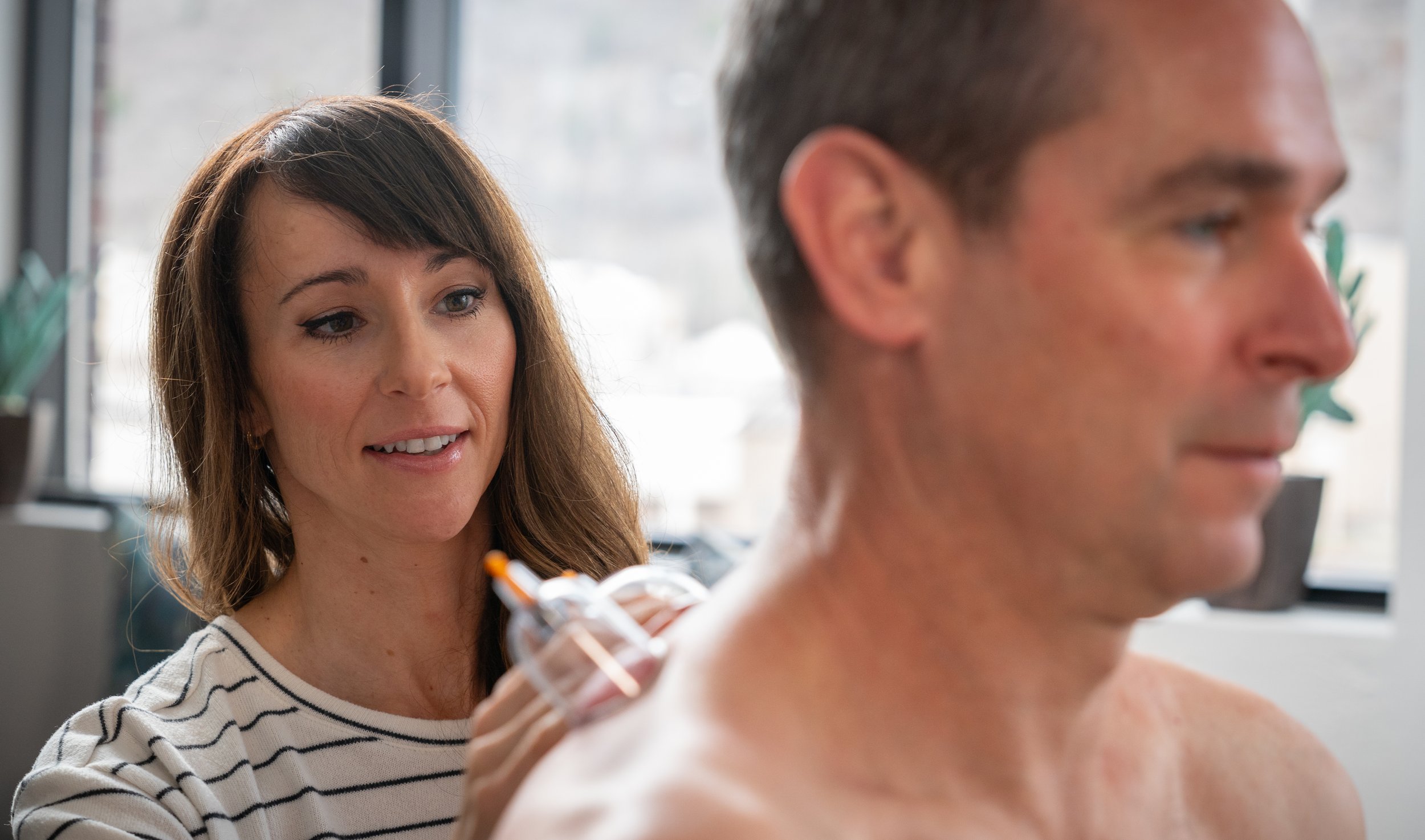
Our Services
Each patient will be evaluated individually to determine the best services for their needs. We ensure that patients are actively involved in the decision-making process.
-

Manual Therapy:
Manual physical therapy techniques involve hands-on methods used by improving movement and reducing pain. These techniques include things like massage, joint mobilizations, and stretching, which aim to relax tight muscles, increase flexibility, and enhance joint function.
By using their hands, therapists can target specific areas of discomfort and guide the body towards better alignment and mobility. This approach can be particularly helpful for treating injuries, recovering from surgery, or managing chronic pain.
-

Movement Training + Corrective Exercise:
Corrective exercise involves specific workouts designed to fix imbalances and improve body alignment. It focuses on strengthening weak muscles and stretching tight ones to address issues like poor posture or joint pain.
By targeting these problem areas, corrective exercises help restore proper movement patterns and prevent future injuries. They are often used to support rehabilitation and enhance overall physical performance.
-

Pilates:
Pilates rehabilitation uses specific exercises to help recover from injuries and improve overall physical function. It focuses on strengthening core muscles, enhancing flexibility, and improving body alignment.
The exercises are low-impact and emphasize controlled movements, which can help reduce pain, prevent future injuries, and improve balance and posture. Pilates rehab is tailored to individual needs and is useful for both injury, recovery, and general wellness.
-

Dry Needling:
Dry needling triggers your body’s natural pain relief and healing. It involves inserting sterile monofilament needles, similar to those used in acupuncture, into (or around) specific muscles, ligaments, tendons or nerves.
Unlike acupuncture, which focuses on energy flow and meridians, dry needling aims to boost blood flow, oxygenate tissues, reduce pain and stimulate fibroblasts to help with healing. It can be effective for both acute and chronic conditions, including trigger points, muscle and nerve pain, arthritis, tendinopathies, muscle knots, and movement restrictions.
-

Concierge:
The most convenient physical therapy. Period. Concierge physical therapy is a personalized approach where you receive one-on-one care from a physical therapist, often in the comfort of your own home or a private setting. This service typically includes extended appointment times and customized treatment plans tailored to your specific needs.
It offers a high level of convenience and attention, making it easier to fit therapy into your schedule and address issues more effectively. This approach can be particularly beneficial for people who need more specialized care, have busy lives or want to optimize their time while on vacation. We bring the clinic to you.
-

Pelvic Floor Physical Therapy:
Pelvic floor physical therapy focuses on strengthening and relaxing the muscles at the base of your pelvis, which support your bladder, intestines, and reproductive organs. It helps address issues like incontinence, pelvic pain, and difficulty with bowel movements. Therapists use exercises, manual techniques, and education to improve muscle function and coordination.
This therapy can be especially helpful for people dealing with postpartum recovery, aging, or surgery-related problems. Pelvic floor function is also essential for optimizing athletic efficiency and performance.
-

Blood Flow Restriction (BFR):
Injuries and surgeries usually lead to strength loss. Blood Flow Restriction (BFR) therapy can help counteract this by preserving or increasing strength, enhancing bone density, reducing pain, and improving blood flow, even with lighter exercises.
By applying an inflatable cuff to limit blood flow while performing lighter activities, BFR stimulates growth hormones, aiding muscle and bone recovery. This method also shortens recovery times due to the reduced exercise load.
-

Cupping:
Cupping therapy is an alternative treatment where special cups are placed on the skin to create suction. This suction helps increase blood flow and can relieve muscle tension, pain, and inflammation. It’s often used in traditional medicine and is sometimes compared to a deep tissue massage.
Additionally, cupping can be applied to movement training and therapy to enhance flexibility and improve recovery by promoting better circulation and reducing muscle soreness.
-

Taping:
Physical therapy taping involves applying special adhesive tape to the skin to support and stabilize muscles and joints. This technique can help reduce pain, improve movement, and prevent injuries by providing support and alignment correction. The tape is often used in conjunction with other therapies to enhance overall treatment outcomes.
-

Visceral Therapy:
Visceral therapy is a type of hands-on treatment that focuses on specific tissues, including organs, nerves, arteries / veins, fascia, dura. It involves gentle, manual techniques to help improve the movement and function of these structures. The goal is to optimize function, relieve discomfort, and support overall health by addressing any restrictions or tensions.
